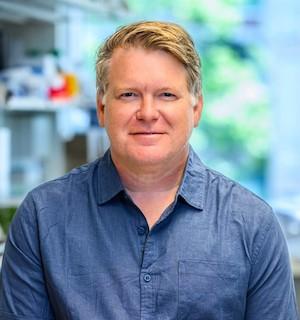Darrell J. Irvine, Ph.D.
Professor, Department of Immunology & Microbiology
The Scripps Research Institute
Investigator, Howard Hughes Medical Institute
Seminar Information

The immune system is highly regulated to ensure safe and efficient surveillance of host tissues to protect from infection, mediated by tightly controlled provision of the right cues at the right time, in the right tissue compartment, to regulate its many complex functions. Inspired by this natural biology, we study how timing, dose, and location of immune-stimulatory cues can be engineered to make more effective and safe vaccines and cancer immunotherapies. Two examples of this work will be discussed: First, to understand how the kinetics of antigen and adjuvant cue availability to the immune system impacts vaccine-elicited immunity, we developed immunization strategies and vaccine delivery technologies that prolong the delivery of antigen/adjuvant cues to lymphoid tissues, alter antigen uptake/capture in lymph nodes, and target antigens to B cell follicles. These approaches modulate diverse aspects of the immune response, expanding the repertoire of responding B cells, augmenting germinal center reactions, and promoting enhanced memory B cell and plasma cell development. Applications of these approaches to enhance vaccine responses to HIV and coronaviruses will be described.
In a second example, I will discuss recent work studying a strategy to target cytokines to immune cells in the setting of cancer immunotherapy: We discovered that immunocytokines targeted to the ubiquitous immune cell surface receptor CD45 (αCD45-Cyt) exhibit significantly diminished internalization rates relative to their wild-type counterparts; this prolonged surface retention sustains downstream STAT activation and enables both cis and trans signaling between lymphocytes. Intratumoral αCD45-Cyt administration led to decoration of leukocytes in the tumor and tumor-draining lymph nodes (TDLNs) without systemic exposure. Therapeutically, a single dose of αCD45-IL12 followed by a single dose of αCD45-IL15 eradicated both treated tumors and untreated distal lesions in multiple syngeneic mouse tumor models. Mechanistically, prolonged exposure to αCD45-Cyt in the tumor and TDLN reprogrammed CD8 + T cells in the TDLN to exhibit an anti-viral transcriptional signature and expanded tumor-specific effector T cells in both the tumor and TDLN. CD45 anchoring thus represents a broad platform for protein retention by host immune cells for use in immunotherapy.
Darrell Irvine, Ph.D., is a Professor at the Scripps Research Institute, where he recently relocated after 20 years as a faculty member at the Massachusetts Institute of Technology. He is also an Investigator of the Howard Hughes Medical Institute. He also serves on the steering committee of the Ragon Institute of MGH, MIT, and Harvard. His research is focused on the application of engineering tools to problems in cellular immunology and the development of new materials for vaccine and drug delivery. Major efforts of the laboratory are directed toward vaccine development for HIV and cancer immunotherapy. Dr. Irvine’s work has been recognized by numerous awards, including election as a Member of the National Academy of Medicine, Fellow of the Biomedical Engineering Society, Fellow of the American Institute for Medical and Biological Engineering, and appointment as an investigator of the Howard Hughes Medical Institute. He is the author of over 200 publications, reviews, and book chapters and an inventor on numerous patents.
